Expertise Provided by Mark Robertson
Manufacturing is the process of transforming materials into finished products. It involves utilizing a range of machinery and equipment to create goods. Manufacturing holds significance in the economy. It plays a vital role on a global scale.
The manufacturing sector is part of the economy. It encompasses the production of goods such as;
- Food and beverages
- Clothing and textiles
- Machinery and equipment
- Electronics
- Vehicles
- Chemicals and pharmaceuticals
- Construction materials
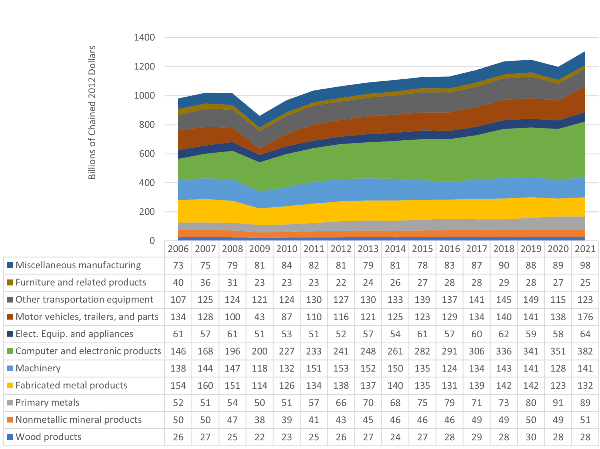 Source: National Institute of Standards and Technology
Source: National Institute of Standards and Technology
What is the difference between industry and industrial sector?
"Industry" and "Industrial sector" are often used substitutable. A group of businesses involved in activities forms the industry. The food industry comprises companies that make, distribute, and sell food. But, the automotive sector includes companies that make and sell vehicles.
But when we talk about the sector, we mean a group of industries that are similar. Industries like making food, clothes, electronics, and machines are part of manufacturing. They transform materials into products.
An industry is a type of activity. An industrial sector includes many similar industries.
Here's a table summarizing the differences, between the industry and industrial sectors;

What is considered an industrial stock?
When you own a company's industrial stocks, it means you own part of a big business. This company makes or sells important items used to make other things. Capital goods include stuff like machines, tools, and equipment. Many investors see industrial stocks as a way to make money when their prices change. They feel connected to the companies they invest in. So, if a lot of companies are making and selling more capital goods, the value of industrial stocks might go up.
Examples of industrial stocks
Here are some examples of companies that fall under the category of stocks;
3M (MMM): 3M manufactures various products, including adhesives, abrasives and electronics.
Caterpillar (CAT): Caterpillar specializes in producing construction and mining equipment.
Boeing (BA): Boeing is an aerospace company that manufactures aeroplanes, helicopters, and spacecraft.
Honeywell is a large company. They make various things like aeroplane equipment and car parts.
United Technologies, also known as RTX, is an industrial company. They make plane engines, elevators, and air conditioning systems. They also manufacture other products too.
In addition, you can also read about Atkore Inc (ATKR) as this also a good option for potential Investor.
The economics of manufacturing
Manufacturing is an important part of the world economy because it is diverse. It encompasses converting materials into finished products through a range of production procedures. Manufacturing companies use workers, money, technology, and information to make things people want.
Economic Significance of Manufacturing
- Manufacturing creates jobs and employs many people around the world. It creates jobs for workers and skilled professionals like engineers and scientists.
- The manufacturing sector has a big impact on economic growth. It generates revenue that adds to the GDP and increases tax revenues. Moreover, manufacturing fosters innovation and technological advancements, leading to productivity and competitiveness.
- Manufacturing improves people's living standards. They make things that help them be well and happy. It ensures people can use products without any difficulties. It also helps build roads and bridges. It also affects areas like healthcare and defense.
Economic Principles in Manufacturing
- Manufacturing companies have a framework called the production function. It connects output and inputs. The main aim is to increase production and reduce costs. Efficient use of labor, capital, and technology can achieve it.
- We base manufacturing choices on supply and demand. Companies change how much they make based on what people want to buy. They also try to find the best prices to make the most money.
- Manufacturing companies use cost-benefit analysis to make investment decisions and improve production processes. It helps them distribute resources better. They weigh the costs against the benefits options before making informed choices.
- Manufacturing has an advantage called economies of scale. As production increases, costs per unit decrease. This leads to lower costs and more profitability.
- Companies are expanding their manufacturing worldwide to enter new markets and cut costs. They also want access to more resources.
Manufacturing Industry Size
"The manufacturing industry has always been important to the US economy. It has contributed a lot. In 2020, manufacturing made up about 10.8% of the U.S. GDP, totaling over $2.2 trillion."
 Source: National Institute of Standards and Technology
Source: National Institute of Standards and Technology
Challenges and Opportunities in Manufacturing
- The fast progress in technology and automation can disrupt traditional manufacturing. To stay competitive, companies must be willing to adapt and use new technologies.
- Businesses care about important things. They try to do good for the environment and community. This prompts them to reduce their environmental impact and use eco-production methods.
- Manufacturers struggle to find and keep skilled workers due to labor market challenges. They need to meet changing demands.
- Competition pushes manufacturers to work harder. They should be creative to stand out in the market.
- Manufacturing companies must have effective supply chain management. This helps them deliver on time, prevent issues, and uphold quality.
The manufacturing industry affects economies, jobs, and the well-being of consumers. It is a changing field with various challenges and prospects. To improve manufacturing, companies need to grasp principles and strategic factors. This can help them be more efficient and contribute to economic expansion. It can also improve the quality of life worldwide.
Types of Manufacturing
There are two categories of manufacturing: manufacturing and process manufacturing.
- Discrete manufacturing refers to the production of products. Examples of manufacturing encompass the creation of automobiles, planes, computers, and appliances.
- Process manufacturing pertains to producing items in bulk or large quantities. Illustrative instances of process manufacturing involve the creation of chemicals, food, and beverages.
Manufacturing processes
The manufacturing processes differ based on the product being made. Still, most manufacturing processes involve the following steps.
- To get the materials ready, we clean, sort, or cut them before processing.
- The raw materials go through a series of steps to become products. You can use machines, tools, and chemicals to change the materials into their form.
- To create a product, we put together the final products. This process includes connecting components or adding labels and packaging.
- You check the finalized items to make sure they meet the quality standards.
Pack and send completed products to our valued customers with care.
Manufacturing trends
The manufacturing industry is changing. There are advancements in technology, and new methods are being developed. Some of the critical trends in manufacturing include:
Manufacturers are using automation to make their operations more efficient and productive. Robots and machines can now do tasks that humans used to do.
Digitalization: Manufacturers have embraced technologies to streamline communication, coordination, and decision-making processes. Manufacturers can use MES and ERP systems to manage their production processes.
Sustainability: Manufacturers have shifted their focus towards sustainability. They are reducing their impact. They use methods to cut energy consumption, waste generation, and greenhouse gas emissions.
Manufacturing Growth
From 1995 to 2020, the United States had an annual growth rate of 2.0% after inflation. This places the country below the level of growth compared to other nations. From 2014 to 2020, the U.S. had a compound annual growth rate of 1.2%. This means its growth rate was lower than in other countries.
 Source: National Institute of Standards and Technology
Source: National Institute of Standards and Technology
Manufacturing and the Future
The manufacturing industry is on the cusp of a transformation in the future. The transformation will happen because of the coming together of printing, AI, and IoT. These advancements will help manufacturers make goods faster and more sustainable. They will also be more cost-effective.
3D Printing: A Paradigm Shift in Production
Printing is also known as additive manufacturing. It is going to have a big impact on the manufacturing industry. This can change the way we make things. It allows personalized items to be produced without tools or molds. Businesses of any size can create custom products using this new technology at any time. As a result, it will decrease production times. Reduce waste significantly.
AI: The Intelligent Manufacturing Enabler
AI will transform manufacturing by automating processes and using data to make decisions. AI can optimize production processes and maintenance needs with its power. Supply chain management enhanced. This will result in productivity, reduced downtime, and better control over inventory.
IoT: The Connected Manufacturing Ecosystem
The Internet of Things (IoT) has the potential to bring a change in the manufacturing industry. You can connect machines, devices, and sensors to make a network of assets on the production line. The system connects different parts and gives data insights in real-time. This helps manufacturers track production and find problems early. It also helps them use resources better for more efficiency and productivity.
Manufacturing is Enduring Significance in the Global Economy
Despite the advancements, technological manufacturing will remain an aspect of the economy. As more people live better, they will want more things. This will create new opportunities for manufacturers worldwide.
Emerging Markets: Driving Manufacturing Growth
The growth of manufacturing depends on emerging markets. Emerging markets have a growing consumer base and low costs. Companies in these areas must adjust to how people like to buy things.
Sustainability: A Cornerstone of Future Manufacturing
The future of manufacturing will depend on sustainability. Companies making things should use methods that don't hurt nature and last long. This is important to meet what consumers want and follow rules.
Skilled Workforce: A Critical Resource
To make manufacturing successful, we need workers who can use and fix technology. Manufacturers should invest in training and education to help people make progress.
Conclusion: A Bright Future for Manufacturing
The manufacturing industry will thrive because of new technologies and high product demand. In this new era, manufacturers who are innovative and adaptable will succeed.
FAQs
Is manufacturing a sector or industry?
The manufacturing industry is a field that includes different sectors. It involves creating goods by converting materials through processes like assembly and fabrication. In this industry, businesses make various products, which boosts the economy and trade.
What is an industrial business?
An industrial business produces goods and services. It can also process or manufacture them. These firms are usually found in manufacturing, construction, or utilities. Their main job is to help the company grow by making things people want and need.
What is a manufacturing industry example?
The automotive sector is part of the manufacturing industry. It includes companies that design, assemble, and make vehicles. This industry has several steps. First, we make metal parts. Then, we assemble and check them for quality. These processes contribute to the creation of automobiles. Play a role in driving economic growth while generating various employment prospects.
Read more about Industrial Stocks in our ongoing sector series:
The Top Industrial Stocks
Are Industrials a Good Investment?
The Best Industrial ETFs
How do you Evaluate Industrial Stocks?
What is the Manufacturing Sector
Industrial Stocks with Dividends
Why Invest in Manufacturing Stocks
Important Manufacturing Sector Ratios
Why are Industrial Stocks Doing Well
What Affects the Industrial Industry?


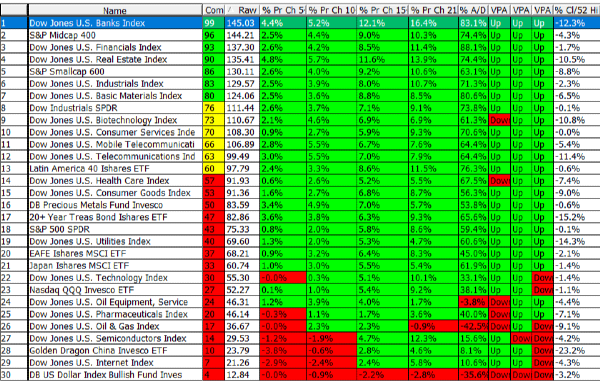
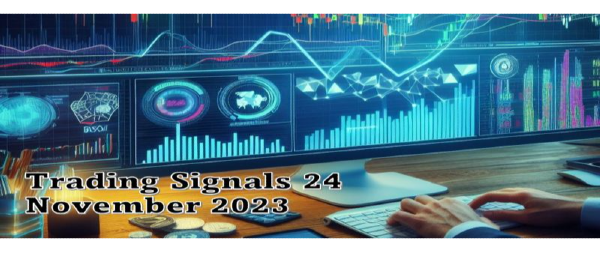
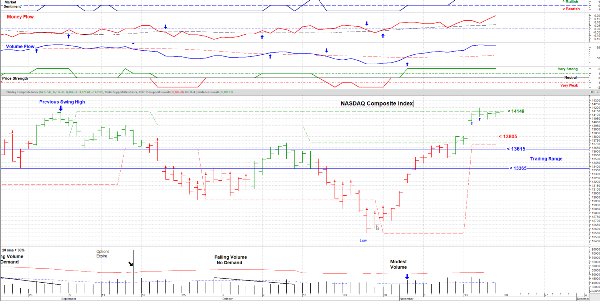



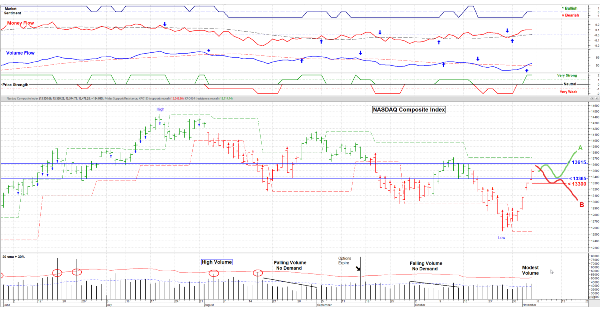




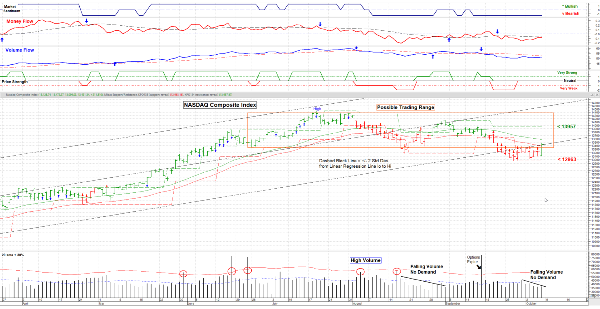
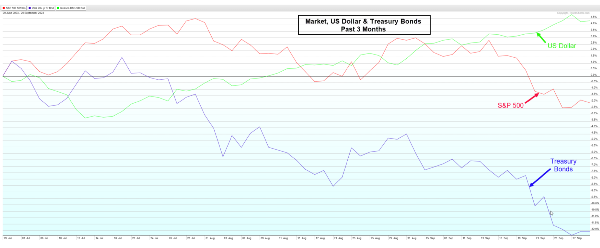


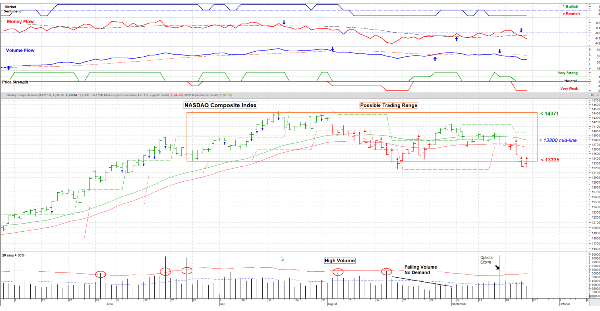
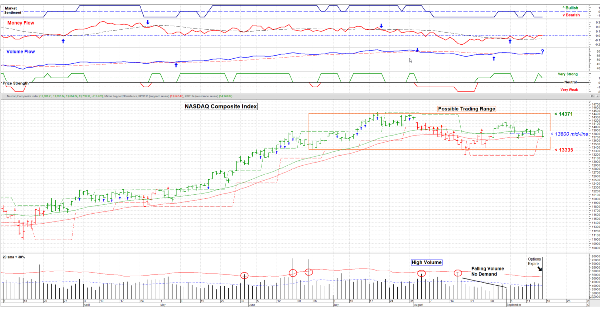
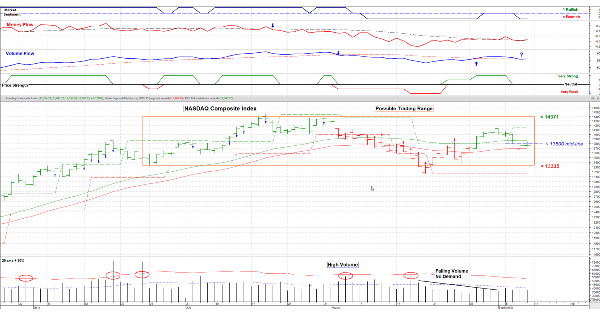










Expertise Provided by Mark Robertson
Manufacturing is the process of transforming materials into finished products. It involves utilizing a range of machinery and equipment to create goods. Manufacturing holds significance in the economy. It plays a vital role on a global scale.
The manufacturing sector is part of the economy. It encompasses the production of goods such as;
What is the difference between industry and industrial sector?
"Industry" and "Industrial sector" are often used substitutable. A group of businesses involved in activities forms the industry. The food industry comprises companies that make, distribute, and sell food. But, the automotive sector includes companies that make and sell vehicles.
But when we talk about the sector, we mean a group of industries that are similar. Industries like making food, clothes, electronics, and machines are part of manufacturing. They transform materials into products.
An industry is a type of activity. An industrial sector includes many similar industries.
Here's a table summarizing the differences, between the industry and industrial sectors;
What is considered an industrial stock?
When you own a company's industrial stocks, it means you own part of a big business. This company makes or sells important items used to make other things. Capital goods include stuff like machines, tools, and equipment. Many investors see industrial stocks as a way to make money when their prices change. They feel connected to the companies they invest in. So, if a lot of companies are making and selling more capital goods, the value of industrial stocks might go up.
Examples of industrial stocks
Here are some examples of companies that fall under the category of stocks;
3M (MMM): 3M manufactures various products, including adhesives, abrasives and electronics.
Caterpillar (CAT): Caterpillar specializes in producing construction and mining equipment.
Boeing (BA): Boeing is an aerospace company that manufactures aeroplanes, helicopters, and spacecraft.
Honeywell is a large company. They make various things like aeroplane equipment and car parts.
United Technologies, also known as RTX, is an industrial company. They make plane engines, elevators, and air conditioning systems. They also manufacture other products too.
In addition, you can also read about Atkore Inc (ATKR) as this also a good option for potential Investor.
The economics of manufacturing
Manufacturing is an important part of the world economy because it is diverse. It encompasses converting materials into finished products through a range of production procedures. Manufacturing companies use workers, money, technology, and information to make things people want.
Economic Significance of Manufacturing
Economic Principles in Manufacturing
Manufacturing Industry Size
Challenges and Opportunities in Manufacturing
The manufacturing industry affects economies, jobs, and the well-being of consumers. It is a changing field with various challenges and prospects. To improve manufacturing, companies need to grasp principles and strategic factors. This can help them be more efficient and contribute to economic expansion. It can also improve the quality of life worldwide.
Types of Manufacturing
There are two categories of manufacturing: manufacturing and process manufacturing.
Manufacturing processes
The manufacturing processes differ based on the product being made. Still, most manufacturing processes involve the following steps.
Manufacturing trends
The manufacturing industry is changing. There are advancements in technology, and new methods are being developed. Some of the critical trends in manufacturing include:
Manufacturers are using automation to make their operations more efficient and productive. Robots and machines can now do tasks that humans used to do.
Digitalization: Manufacturers have embraced technologies to streamline communication, coordination, and decision-making processes. Manufacturers can use MES and ERP systems to manage their production processes.
Sustainability: Manufacturers have shifted their focus towards sustainability. They are reducing their impact. They use methods to cut energy consumption, waste generation, and greenhouse gas emissions.
Manufacturing Growth
From 1995 to 2020, the United States had an annual growth rate of 2.0% after inflation. This places the country below the level of growth compared to other nations. From 2014 to 2020, the U.S. had a compound annual growth rate of 1.2%. This means its growth rate was lower than in other countries.
Manufacturing and the Future
The manufacturing industry is on the cusp of a transformation in the future. The transformation will happen because of the coming together of printing, AI, and IoT. These advancements will help manufacturers make goods faster and more sustainable. They will also be more cost-effective.
3D Printing: A Paradigm Shift in Production
Printing is also known as additive manufacturing. It is going to have a big impact on the manufacturing industry. This can change the way we make things. It allows personalized items to be produced without tools or molds. Businesses of any size can create custom products using this new technology at any time. As a result, it will decrease production times. Reduce waste significantly.
AI: The Intelligent Manufacturing Enabler
AI will transform manufacturing by automating processes and using data to make decisions. AI can optimize production processes and maintenance needs with its power. Supply chain management enhanced. This will result in productivity, reduced downtime, and better control over inventory.
IoT: The Connected Manufacturing Ecosystem
The Internet of Things (IoT) has the potential to bring a change in the manufacturing industry. You can connect machines, devices, and sensors to make a network of assets on the production line. The system connects different parts and gives data insights in real-time. This helps manufacturers track production and find problems early. It also helps them use resources better for more efficiency and productivity.
Manufacturing is Enduring Significance in the Global Economy
Despite the advancements, technological manufacturing will remain an aspect of the economy. As more people live better, they will want more things. This will create new opportunities for manufacturers worldwide.
Emerging Markets: Driving Manufacturing Growth
The growth of manufacturing depends on emerging markets. Emerging markets have a growing consumer base and low costs. Companies in these areas must adjust to how people like to buy things.
Sustainability: A Cornerstone of Future Manufacturing
The future of manufacturing will depend on sustainability. Companies making things should use methods that don't hurt nature and last long. This is important to meet what consumers want and follow rules.
Skilled Workforce: A Critical Resource
To make manufacturing successful, we need workers who can use and fix technology. Manufacturers should invest in training and education to help people make progress.
Conclusion: A Bright Future for Manufacturing
The manufacturing industry will thrive because of new technologies and high product demand. In this new era, manufacturers who are innovative and adaptable will succeed.
FAQs
Is manufacturing a sector or industry?
The manufacturing industry is a field that includes different sectors. It involves creating goods by converting materials through processes like assembly and fabrication. In this industry, businesses make various products, which boosts the economy and trade.
What is an industrial business?
An industrial business produces goods and services. It can also process or manufacture them. These firms are usually found in manufacturing, construction, or utilities. Their main job is to help the company grow by making things people want and need.
What is a manufacturing industry example?
The automotive sector is part of the manufacturing industry. It includes companies that design, assemble, and make vehicles. This industry has several steps. First, we make metal parts. Then, we assemble and check them for quality. These processes contribute to the creation of automobiles. Play a role in driving economic growth while generating various employment prospects.
Read more about Industrial Stocks in our ongoing sector series:
The Top Industrial Stocks
Are Industrials a Good Investment?
The Best Industrial ETFs
How do you Evaluate Industrial Stocks?
What is the Manufacturing Sector
Industrial Stocks with Dividends
Why Invest in Manufacturing Stocks
Important Manufacturing Sector Ratios
Why are Industrial Stocks Doing Well
What Affects the Industrial Industry?